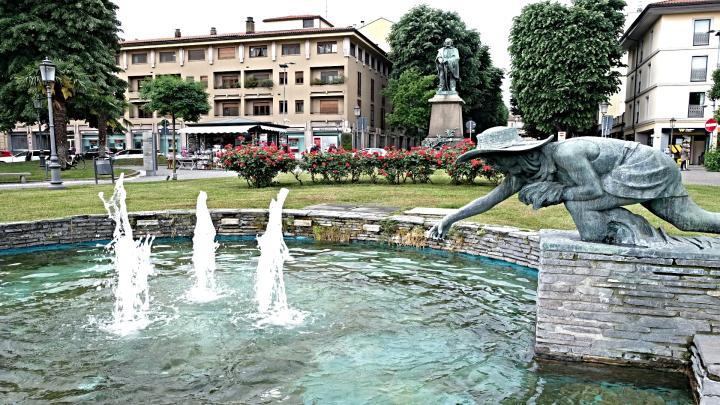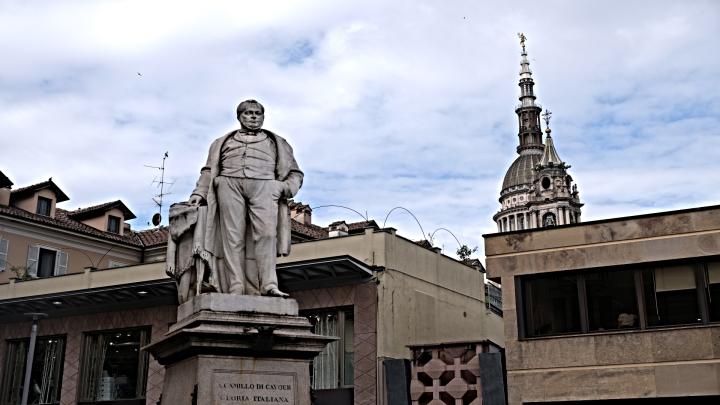"Una cittadina un po' stramba, immersa nella pianura padana, con quei No nel nome che fa sì che prima di tutti lei si nega e allora sei tu che devi scoprirne piano piano la bellezza e la raffinata eleganza”
It is believed that Novara has few monuments to see and one can exhaust the visit in a few hours, while instead being a city rich in churches, palaces, squares and alleys one would need a whole day to be able to discover its treasures.
One of the first things one notices arriving in the historic centre of Novara is that of seeing pop up and disappear among the city's buildings the dome of San Gaudenzio, whose height is 126 metres.
Oce you arrive in front you can enter the namesake church, which the people of Novara consider the city's dearest because it preserves the remains of St. Gaudentius, the first bishop of Novara, who lived at the turn of the fourth and fifth centuries.
Some legends tell that he was educated in Christianity by a noblewoman from Eporedonia, St. Juliana, but it was St. Eusebius who converted him. He became a priest and was sent to Novara to spread the doctrine and would die here on 22 January 418.
The scurolo, where the saint's relics are kept, is an octagonal temple built between 1674 and 1711 to a design by Francesco Castelli. It is located in the right transept of the basilica, and to get there you have to walk down a flight of steps because it is raised above the church floor. The environment is small and cosy, inviting prayer and reflection.
Once the visit to the abbey is finished, not too far away is Casa Bossi, considered among the most beautiful Italian palaces of neoclassical appearance. It was built in the 1700s, but owner Luigi Desanti had it renovated in the 19th century with the help of architect Alessandro Antonelli, who changed its appearance in 1857.
Leaving Casa Bossi, you can continue to Novara Castle, passing by the Bastions of the Albertine Barrier, two symmetrical neoclassical structures facing each other. Opened in 1837, they housed the headquarters of the guard and the duty, while they currently host temporary exhibitions.
Not much remains of the Visconteo Sforzesco castle, except vague shapes within a moat. Behind the castle, however, is a pleasant garden of the Allea, which was converted to park in the mid-18th century and is now regarded as the green lung of the old town. Originally these spaces were used to defend the fort from attack.
Walking inside the park among century-old trees we reach World War I War Memorial, also called Winged Victory.
After an invigorating walk, we can re-enter the heart of the historic centre by taking via Rosselli, the most beautiful street in the entire centre overlooked by many historic buildings, which also passes piazza delle Erbe, also called Piazza delle Beccherie Maggiori, because this is where the stalls of butchers, shoemakers and other merchants were set up.
Now we can move to Piazza della Repubblica overlooked by the most important monuments: on one side a long arcade runs alongside the beautiful cathedral, which stretches to the baptistery, the latter built in the early Christian era in the fifth century A.D., where some interesting frescoes can still be admired today: the scenes of the Apocalypse and the Last Judgement.
The cathedral was built in the area of a former basilica dedicated to St. Mary was built between 350 and 400, where there was a pagan temple dedicated to the worship of God Jupiter. Its structure has been modified several times over the centuries until it assumed its present Baroque structure.
On the other side of the square, however, is the access for Broletto, consisting of four buildings: the Arengo Palace, the Potestà Palace, the Paratici Palace and the Refendaria Palace.
This was one of the most important places for Novara, for it was here that the hub of city life took place.
Palazzo Natta is also worth a visit. It was built for the Count Caccia family and then passed into the ownership of the Natta family. Today the structure, which houses the province, dates back to different eras: the old part is the clock tower built in the 13th century. In later centuries modifications were made, creating spaces in the plan like ancient Roman villas.
Romanesque lovers should not miss Casa della Porta, a medieval building with a Gothic style whose brick facade is adorned with terracotta friezes.
Nearby we find the intersection with Corso Mazzini and Corso Cavour, from which theHours Corner stems. This is where the cardo and decumanus met in Roman times; today there are (hidden among the buildings) four clocks.
Taking Corso Cavour one arrives, passing through the square of the same name, at the train station, which went into operation in 1854 when the line between Mortara and Novara was opened.
Foto @alessandra.corra
Archivio regione.piemonte





